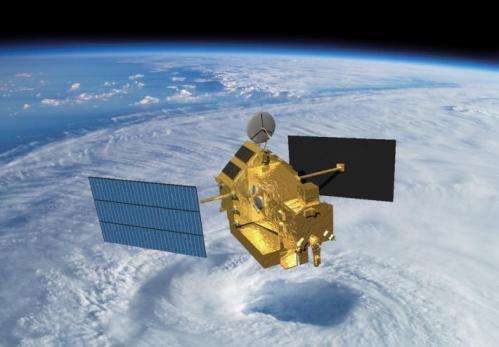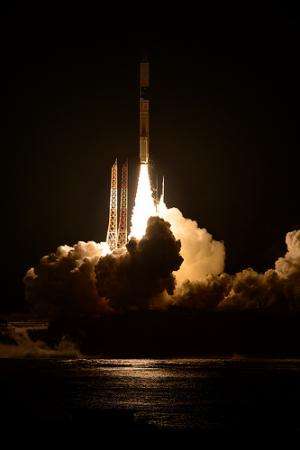Low on fuel, rainfall satellite slowly spirals to its death in 2016

After 17 years of faithful service, the end is in sight for the Tropical Rainfall Measuring Mission (TRMM). The joint NASA-Japanese mission is out of fuel (except for a small reserve amount for emergencies) and beginning its slow descent back to Earth.
From that fall, the satellite is not going to recover. It's expected to re-enter the atmosphere and be destroyed around November 2016. The satellite will be shut down around February 2016, depending on how much solar activity pumps up the atmosphere.
"TRMM has met and exceeded its original goal of advancing our understanding of the distribution of tropical rainfall and its relation to the global water and energy cycles," stated Scott Braun, the mission's project scientist at NASA's Goddard Space Flight Center in Maryland.
The satellite was designed to operate at about 250 miles (400 kilometers), and will slowly fall untl it gets to around 75-93 miles (120-150 kilometers), where it will break up.
While there's no longer enough fuel to keep it at its normal operating altitude, NASA emphasized the satellite will still function well enough to estimate rains, floods and cyclones during the descent. However, its microwave imager will be affected because the field of view changes as the satellite descends.
NASA also pointed out that the successor satellite, the Global Precipitation Measurement (GPM) Core Observatory, is performing well since its launch on Feb. 27 this year.

"The GPM Core Observatory's area of coverage extends beyond TRMM's, covering the area from the Arctic Circle to the Antarctic Circle. While this means fewer observations of the tropics, it also means that GPM will be able to observe hurricanes, like Sandy in 2012, that travel north (or south) farther into the mid-latitudes," NASA wrote.
"GPM will also be able to detect light rain and snowfall, a major source of available fresh water in some regions. The joint NASA/JAXA mission will study rain and snow around the world, joining with an international network of partner satellites to provide global precipitation datasets on half hourly and longer time scales."
Source: Universe Today


















